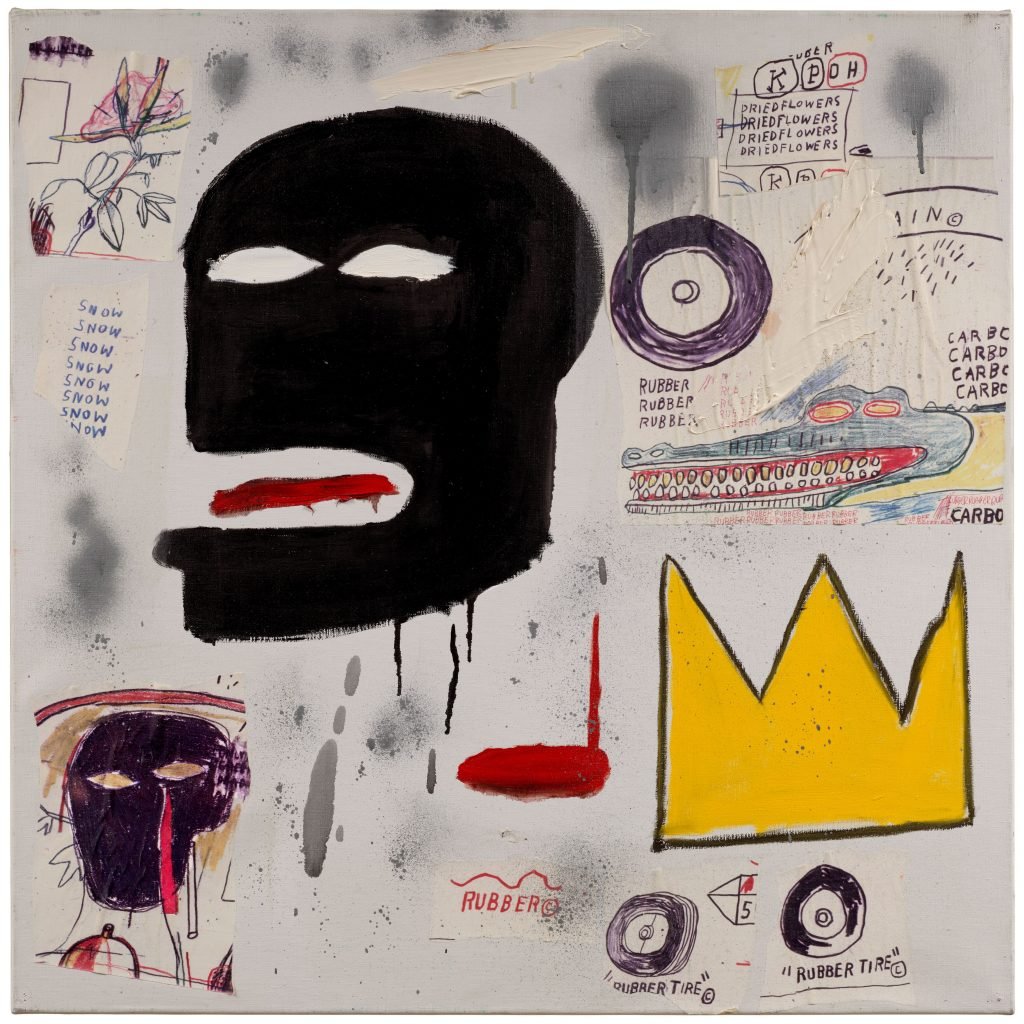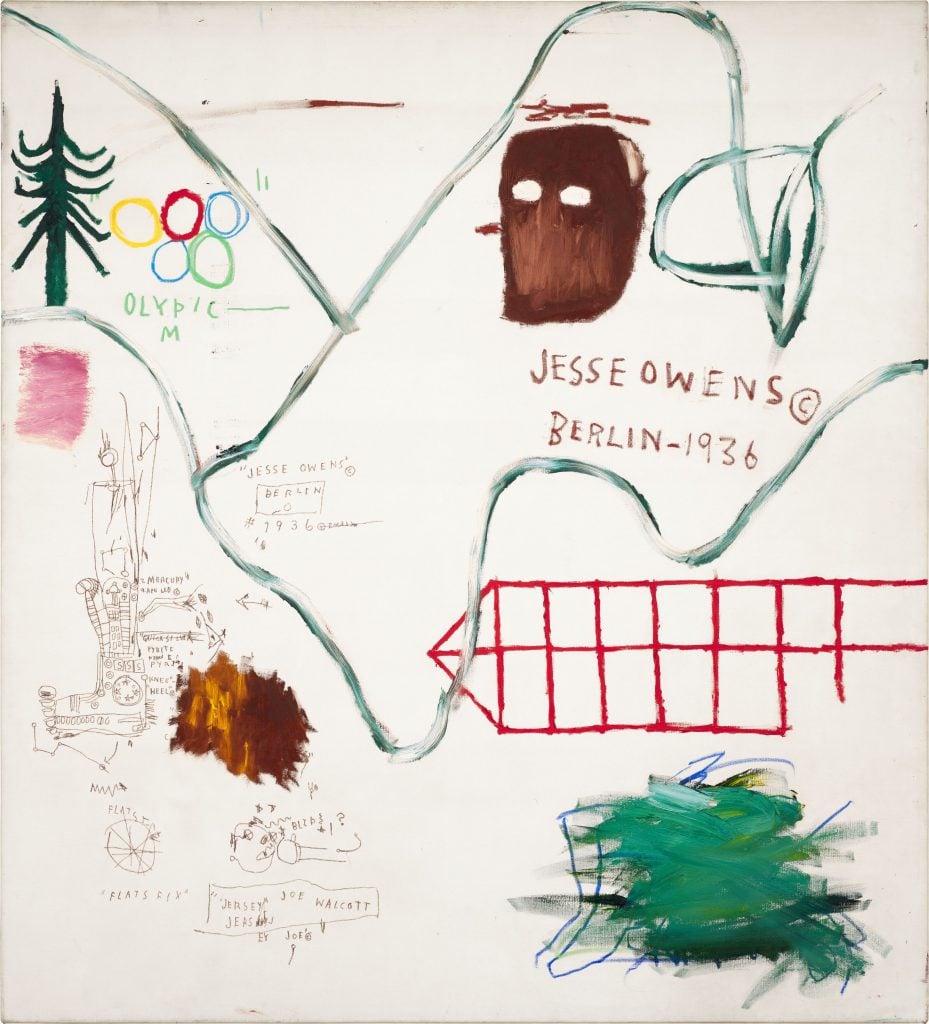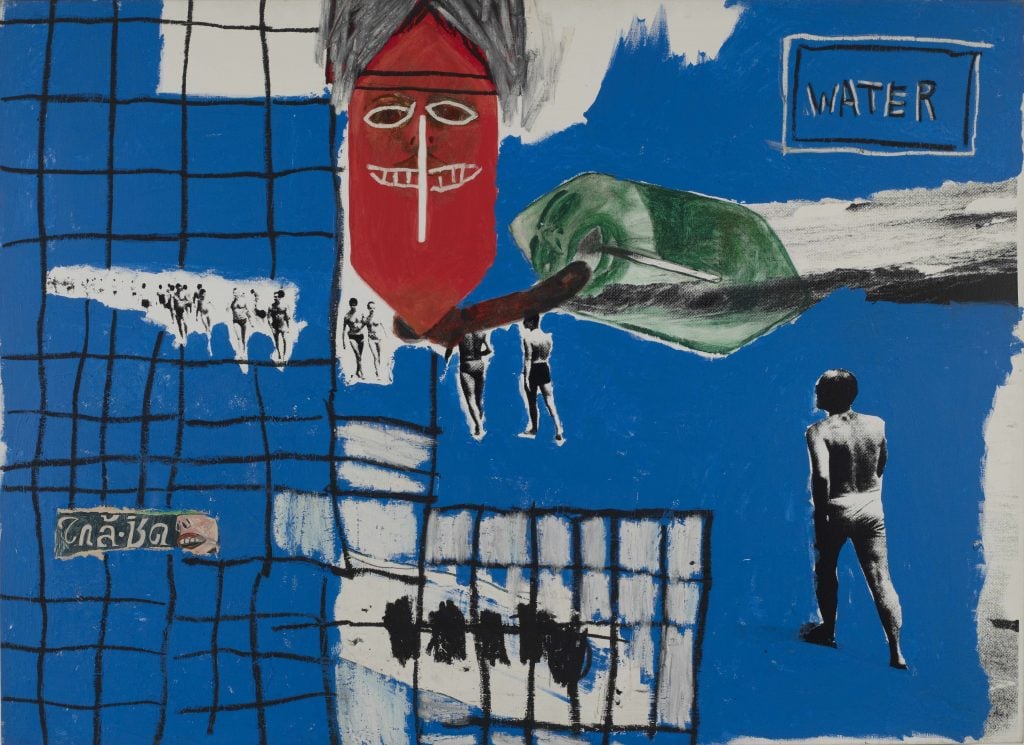
24 Dec Basquiat's Little-Known Alpine Period Explored in a New Show
Source Credit: Content and images from Artnet News. Read the original article - https://news.artnet.com/art-world/basquiat-engadin-show-hauser-and-wirth-2593564
Basquiat. After astronomical auction prices and endless sneaker collaborations, the artist’s name most readily evokes SoHo streets and Palladium parties. For those truly in the know, though, that name can also elicit Engadin alpines.
Hauser and Wirth’s latest St. Moritz exhibition “Jean-Michel Basquiat. Engadin” joins recent attempts to highlight Basquiats lesser-known periods in locales like Los Angeles and Modena.

Jean-Michel Basquiat, See (Lake) (1983). Photo: Jon Etter, © Estate of Jean-Michel Basquiat. Licensed by Artestar, New York, Courtesy Private Collection.
In addition to foregrounding Basquiat’s Swiss affinity for the first time, however, “Engadin” also asserts that this idyll became an imposing force within his work. “Engadin” features more than a dozen paintings, works on paper, and even a nine-panel assemblage all created by the artist in the region. Many works are on loan from private collectors.

Jean-Michel Basquiat, To Repel Ghosts (1986). Photo: Reto Pedrini Photography, © Estate of Jean-Michel Basquiat. Licensed by Artestar, New York, Nicola Erni Collection.
Basquiat visited Switzerland 13 times, courtesy of his art dealer, Bruno Bischofberger. The artist made his first trip out in September 1982, just one year after his first New York show, to attend the reception for his debut at Bischofberger’s Männedorf, Switzerland gallery—“only to discover that no opening had been scheduled,” Christie’s recalled.
“Instead, Bischofberger took the artist on a field trip to his birthplace, a mountain village called Appenzell,” Christie’s continued. “Basquiat even painted a piece about the trip, Bruno in Appenzell (1982).”

Jean-Michel Basquiat, Skifahrer (1983). Photo: Thomas Hennocque, © Estate of Jean-Michel Basquiat. Licensed by Artestar, New York Collection Carmignac.
That same year, Basquiat became the youngest artist to ever participate in Documenta. “From then on, Jean-Michel Basquiat often visited me in Switzerland, where he particularly liked it,” Bischofberger, who contributed to the exhibition’s catalog, remarked in its release. “About half a dozen times in Zurich and exactly seven times in St. Moritz, four of them in the summer.”

Installation view of “Jean-Michel Basquiat. Engadin” at Hauser & Wirth St. Moritz. Photo: Stefan Altenburger Photography Zürich, © Estate of Jean-Michel Basquiat. Licensed by Artestar, New York. Courtesy Hauser & Wirth.
There, preeminent Basquiat scholar Dieter Buchart mused, “the contrast between the pulsating life, the clubs, the street noise, and the breakneck speed of the metropolis New York and the ‘discovery of slowness” likely spurred Basquiat’s fondness for the Engadin—even if his experiences were not always serene.”
Apparently, Basquiat was so eager to paint that he mucked up a custom mattress that Bischofberger’s wife had bought, just because it was in the garage he was using as a studio. But, despite occasional spats with his dealer, Basquiat also made an entire series of slightly unsettling paintings as Christmas presents for the couple.

Jean-Michel Basquiat, X-mas Painting for Bruno (1984). Photo: © Estate of Jean-Michel Basquiat. Licensed by Artestar, New York Bischofberger Collection, Männedorf-Zurich.
Other tensions also surface throughout “Engadin.” In Bull Show Two (1983), the artist appears to unpack complicated feelings around the local Toggenburg Bull Show. Big Snow (1984) references Jesse Owens, the American track and field champion whose gold medal was withheld due to the color of his skin during the 1936 Berlin Olympics.

Jean-Michel Basquiat, Big Snow (1984). Photo: © Estate of Jean-Michel Basquiat. Licensed by Artestar, New York, Private Collection.
Moments of definite levity appear throughout the exhibition, too, in works like See (Lake) (1983) and Skifaher (1983). Basquiat made both for a dinner with collectors at the Bischofbergers’ hunting lodge.
It was here, too, that Bischofberger proposed Basquiat’s collaborative artworks with Andy Warhol and Francesco Clemente, after Bischofberger watched the artist make a drawing for his daughter. One such work appears in “Engadin,” offering the most compelling point in Hauser and Wirth’s argument that Switzerland offered Basquiat more than just a relaxing change of pace.

Jean-Michel Basquiat, Andy Warhol, and Francesco Clemente, In Bianco (1984). Photo: © Estate of Jean-Michel Basquiat. Licensed by Artestar, New York© Fundación Almine y Bernard Ruiz Picasso —FABA —2024.
“Jean-Michel Basquiat. Engadin” is on view at Hauser and Wirth, Via Serlas 22, 7500 St. Moritz, Switzerland, through March 29, 2025.
Source Credit: Content and images from Artnet News. Read the original article - https://news.artnet.com/art-world/basquiat-engadin-show-hauser-and-wirth-2593564

